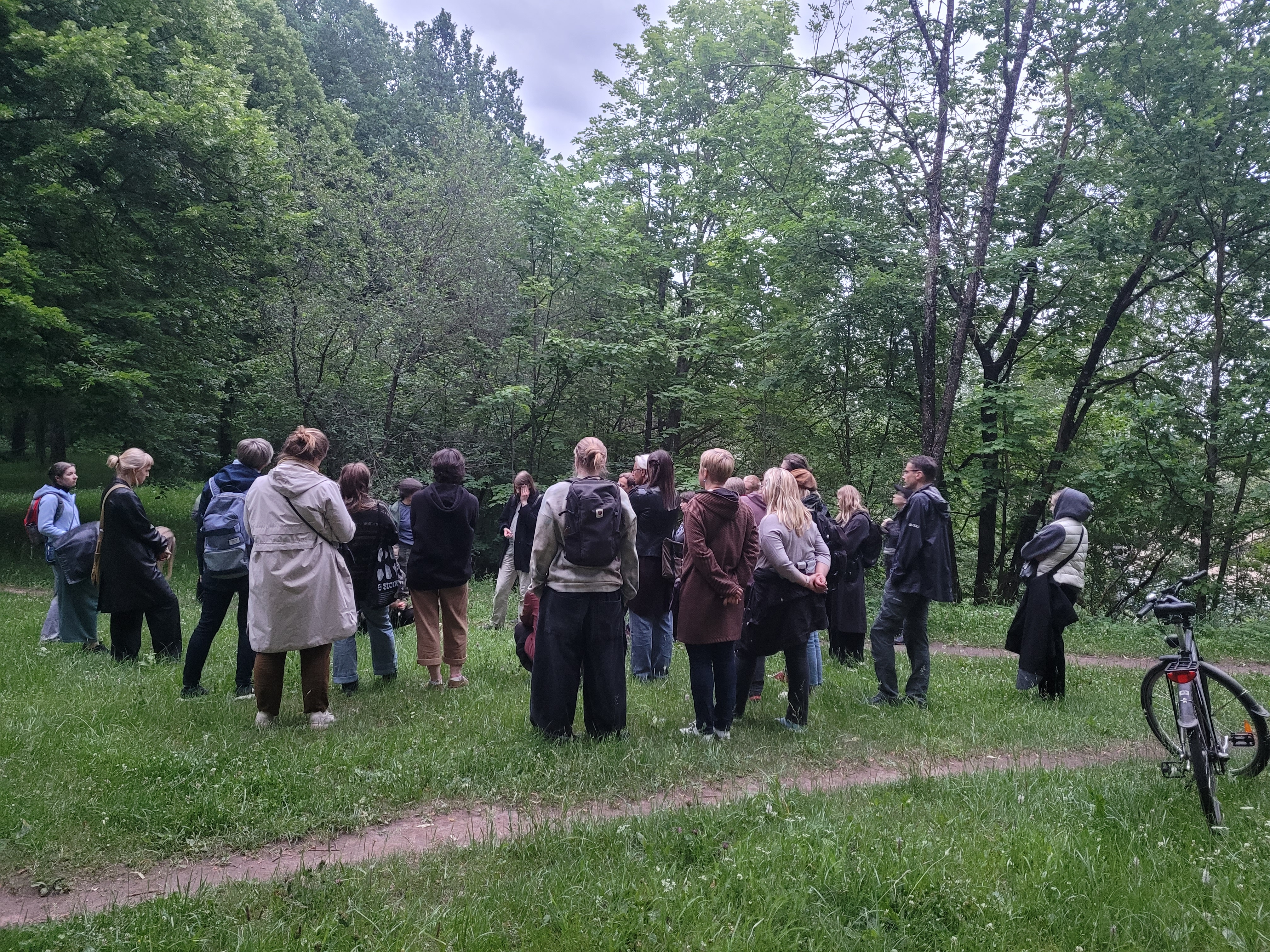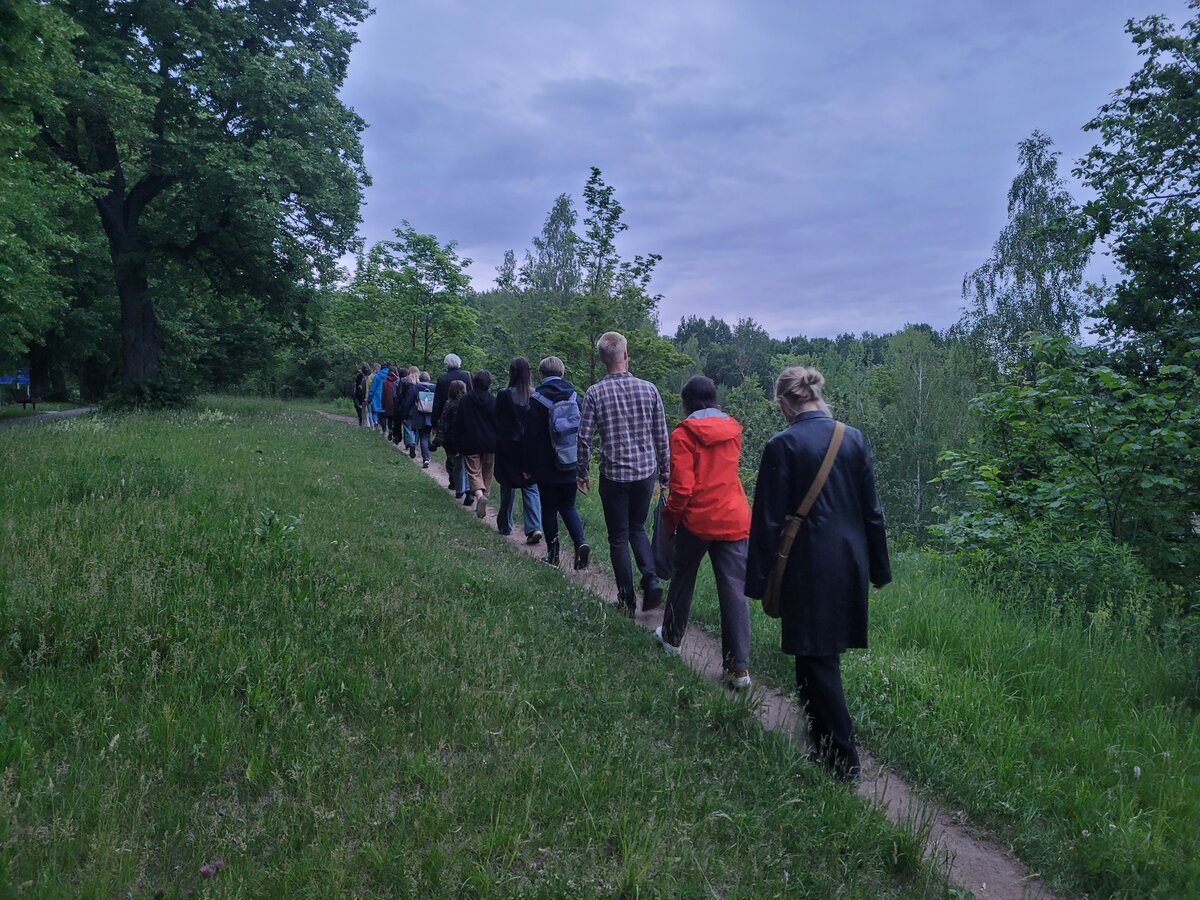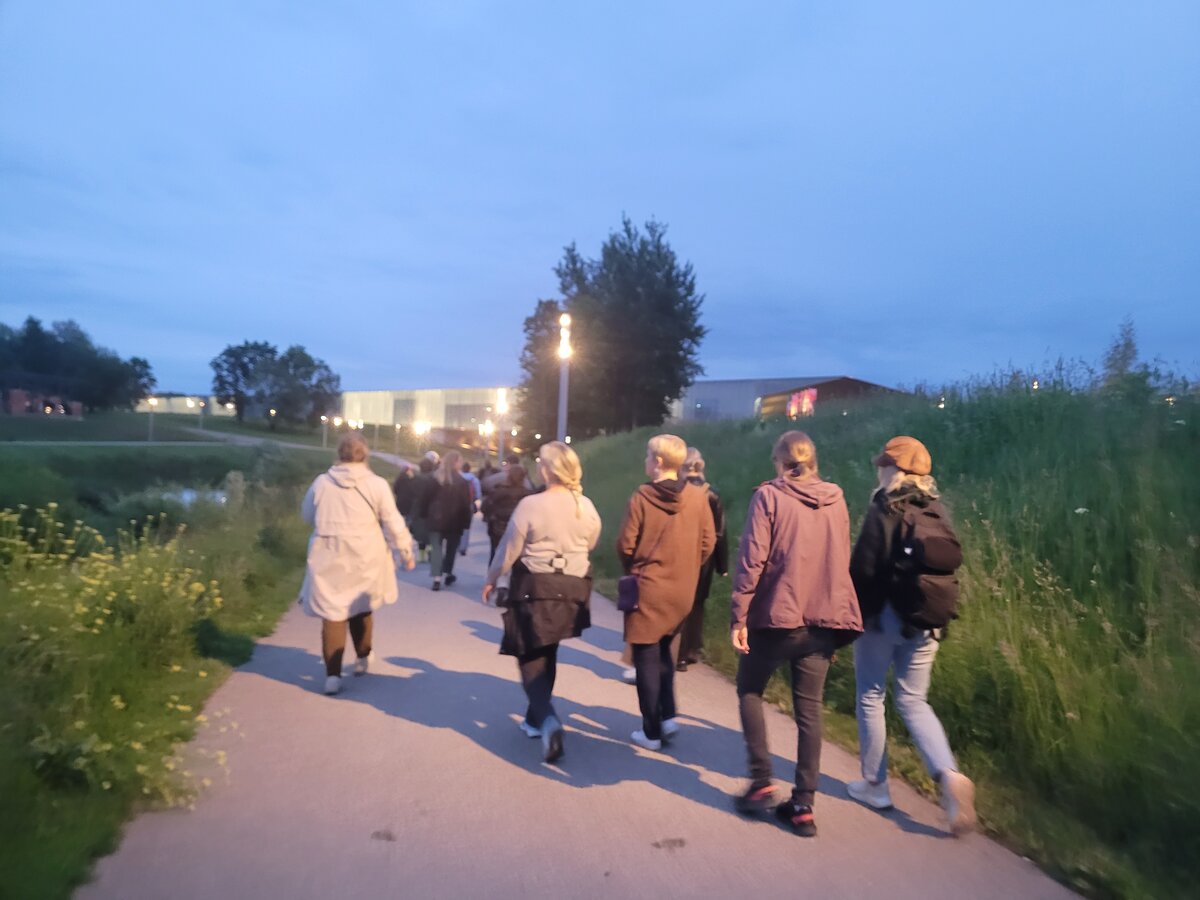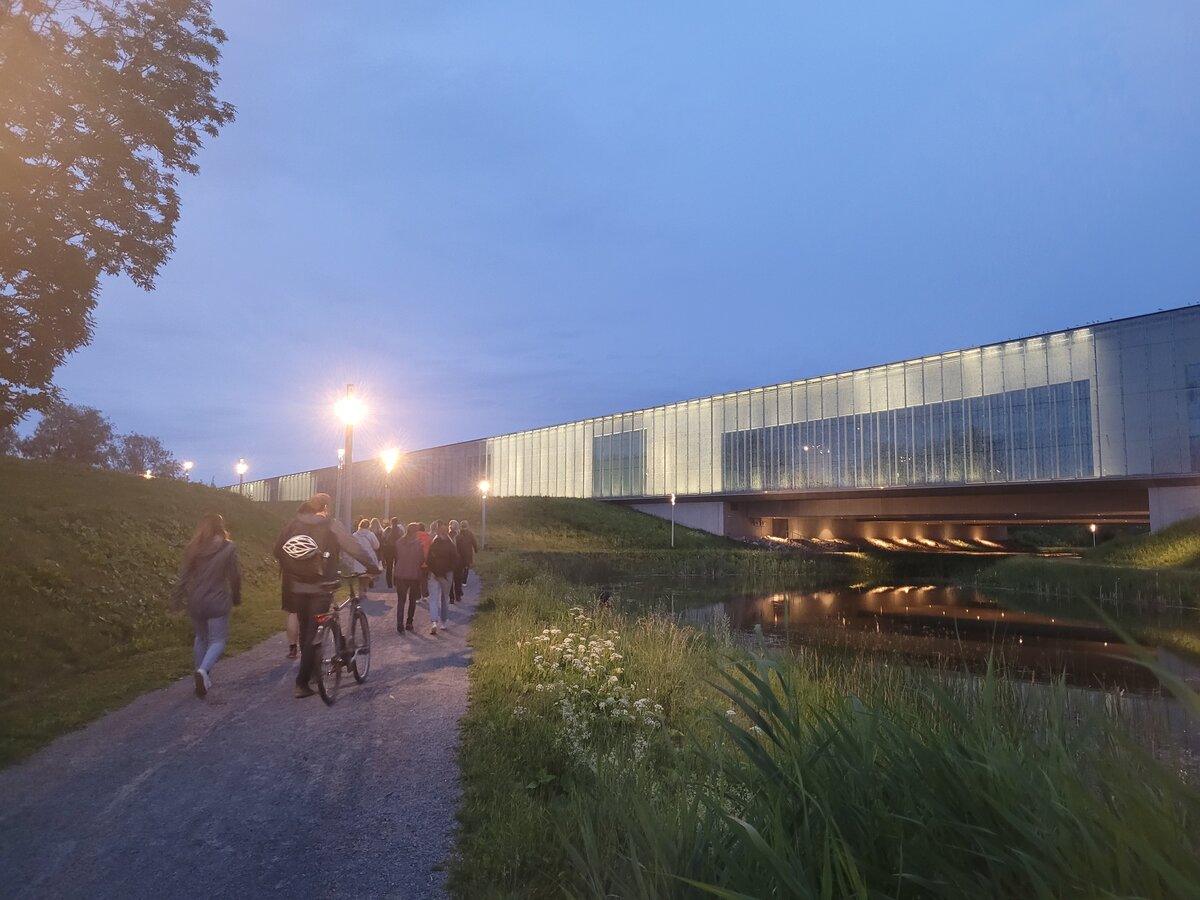
A walk on the wild side: Discovering the non-human city at night
On a warm evening of June 11, 2024 ethnologist Hildegard Reimann and I, Nelly Mäekivi had the pleasure of guiding a small group of local people of Tartu (Estonia) on an unusual journey — a nighttime walk through the quieter parts of the city to explore how non-human animals navigate these urban spaces. Our goal was to shift perspectives, step away from the human-centered view of the city, and open ourselves to the experiences of the other creatures that call it home.
As a zoosemiotician, I’m fascinated by how animals communicate and interact, especially in environments that are shaped almost entirely by humans, but shared with other species. This walk offered a chance to experience the city as they do: a complex, multi-sensory landscape where light, sound, and scent play vital roles in navigating and surviving. What followed was an evening of discovery, where we learned not only about the lives of urban animals but also about our own relationship with the spaces we share with them.

A Step Away from the Familiar
We began just as dusk was settling in. The familiar signs of human life winding down for the evening. Hildegard and I led the group away from the well-lit streets and busy pathways, taking smaller side roads and slipping into cemetary and parks where human activity fades and the city’s other inhabitants become more visible.
We asked our group to pay attention to their surroundings in a different way, encouraging them to focus on things they might usually overlook — the shifts in temperature, the rustling of leaves in the wind, the distant flutter of wings. It’s always a revelation to watch people realize just how alive the night is when they concentrate on other senses than sight. The falling darkness, inhibiting seeing their surroundings, makes them notice new aspects in the environment.
As we walked, we explained how animals like birds and bats adapt to urban environments. Streetlights, for example, create a patchwork of shadows and brightness that some animals avoid while others use to their advantage. Slow-flying bats, especially, rely on darker spaces where they can avoid predators. Fast-flying bats, on the other hand, are drawn to lights to feed on all the insects who are also attracted to artificial light sources. It’s easy to forget that every light we switch on changes the dynamics of the space for someone else. For these creatures, the city at night is both a haven and a challenge.
Urban Wildlife and the Shared City: Adapting to Coexist
This walk gave us the opportunity to reflect on the unseen lives that share these spaces with us. It was a time to consciously acknowledge the proximity of wild animals in the city.
Like many other urban animals, certain species have adapted to the city's rhythms, changing their activity patterns to avoid human presence. These shifts affect not only their behavior but also their prey, as they hunt at different times and navigate an altered urban ecosystem. Their ability to move through human-made spaces — crossing roads, scavenging for food, and finding shelter in hidden corners — speaks to their resilience and ingenuity. Yet it also reminds us that the city is not just ours. It’s a shared environment where human and non-human lives intersect and interact in ways we don’t often notice.
This concept of shared space became a central theme of our walk. We discussed how humans interpret these brief glimpses of other species, often labeling animals as either nuisances or oddities, without considering their perspectives. We highlighted that the city's design and infrastructure compel animals to modify not only their routines but also their ways of communicating. Some species develop new methods of signaling to each other, using the city's architecture — fences, walls, and alleyways — as part of their navigational and territorial cues.
The Sensory City
One of the most important lessons from our walk was to learn how to engage our senses differently. Urban animals experience the city in a myriad of ways. Their survival depends on acute senses of smell, hearing, and sight — often finely tuned to pick up cues that we are completely unaware of.
As we moved through a park near the edge of the city, we frequently stopped, listened, and smelled. The group absorbed their surroundings through the senses they seldom use to navigate. Hedgehogs, for example, navigate the city by scent trails and sound, finding their way through gardens and alleys using sensory information that we often ignore. They smell not only food but also danger, navigating human-made barriers with precision that belies their small size. The city is, for them, a living, breathing organism full of cues and signals.
The smells of the night were particularly telling. As we moved through a park, the air changed — from the metallic tang of the city center to the earthy smells of damp soil and cut grass. For animals, these smells form a map, guiding them through the urban maze and helping them avoid predators or find mates. It’s a world that exists parallel to ours, hidden but ever-present.

A city for all species
Our walk ended on a patch of open land behind the Estonian National Museum, where we sat for a quiet tea. In this spot, we reflected on the importance of recognizing the city as a shared habitat, not just for humans but for all species. We emphasized how critical it is for urban planning to take into account the needs of non-human residents. Too often, cities are designed with only human convenience in mind, with little regard for how changes in infrastructure might affect wildlife.
Encounters with other animals, however fleeting, offer a chance for humans to rethink their relationship with the natural world. We are not separate from nature, and the more we acknowledge that, the more harmonious our cities can become.
Walking through the city at night, with its hidden creatures and quiet corners, reminded us of the incredible diversity of life that exists even in the most human-dominated spaces. These animals — whether they are foxes, bats, birds, or hedgehogs — have found ways to survive in a world that wasn’t built for them. They adapt, they communicate, and they thrive in ways that we are only beginning to understand. The city, with all its lights, sounds, and structures, is not just ours. It belongs to the creatures who inhabit it alongside us, often unseen but always present. Recognizing this is the first step toward creating urban spaces that are more inclusive, more mindful, and more attuned to the needs of all species.
Walking the night, we weren’t just exploring the city. We were opening our senses to a world that is always there, just beyond the edges of our awareness, waiting to be noticed.
